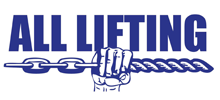
SAFETY GUIDE TO YOUR LIFTING HOOKS
As the majority of lifting applications include rigging and lifting hooks that are frequently used with cranes, hoists, and slings, you should always take your time when selecting the suitable lifting hook for your lifting project, as well as the right sling or hoist. You can find a large range of lifting hooks, materials, and sizes available in the market, all of which are appropriate for different lifting tasks. The following are some of the most widely used hook types in the rigging and lifting industry.
Some of the rigging hooks indicated above are routinely used with hook safety latches, while others are not. When lifting and rigging loads, safety latches can help guarantee that a sling is firmly attached to the load in order to prevent it from sliding when the sling gets slack. To prevent damage to your lifting hooks, you should always be careful when you are using them.
Some Good Practises
- Never exceed the hook’s working load limit or overload the chain or attachments.
- Hooks shouldn't be loaded improperly or tip loaded; they also shouldn't be bent or exposed to sharp objects.
- Always match the size and working load limit of the hook to what the chain also support when you attach hooks to a chain.
- Avoid being exposed to corrosive substances or high temperatures that could compromise the hook's strength. Hooks can be used in temperatures ranging from -40°F to 400°F without compromising their operating load limit.
It's vital to remember that the outside temperature might affect how a weight is lifted. Colder weather makes it easier for loads to freeze to the ground, while really low conditions can cause rigging hardware and lifting equipment to become dangerously fragile. Always keep in mind that throughout the operation of the lifting hook, communication is essential between all operators and personnel, and everyone present should be aware of the signals to use when lifting and unloading loads.
At All Lifting we pride ourselves on providing all about lifting advice. We always provide the greatest guidance along with the highest customer service. If you are having trouble finding what you're looking for or are unsure of what you require for your lifting application, contact our sales team by phone or email to speak with a lifting product specialist.


